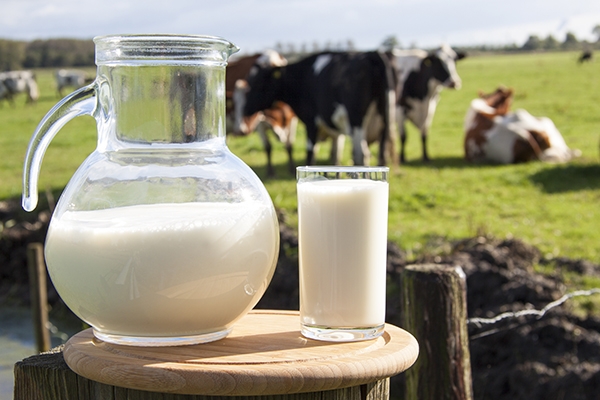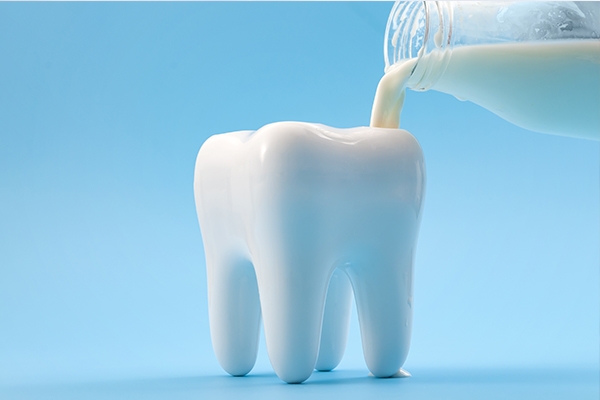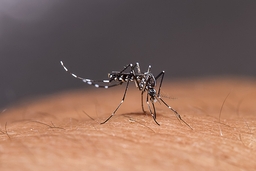Should We Still Drink Milk?

This year's World Milk Day focuses on how the dairy industry can reduce its environmental footprint while still providing nutrition and a living for many people. Milk production is known to be harmful to the environment. Behind the many advantages, there is concern about the future environmental impact. So, should we still drink milk?
World Milk Day
Since 2001, June 1 has been designated as World Milk Day. The FAO, the world food organization, started it to remind people about the importance of milk as a global food. Aside from that, we are reminded that the dairy employs billions of people.
Milk is a nutrient-rich liquid produced by the mammary glands. Glands that are unique to mammals, including humans. Physiological and environmental factors influence milk production.
Milk is a whole food. Because of its high nutritional content, it takes longer for the body to digest. That is, it keeps the body full.
Despite the proliferation of dairy products, cow's milk remains the champion. One is in terms of nutrition. Two, in terms of the most significant environmental impact.
When it comes to environmental footprints, we can't overlook the formula. This article will concentrate on cow's milk and formula.
Fresh cow's milk

Cow's milk can be consumed perfunctorily. If your digestion is strong, you may drink it directly. However, we recommend pasteurized (heated) milk.
Many people believe that pasteurization reduces milk's nutritional value. Pasteurization, in fact, only kills the bacteria that cause stomachaches and makes milk safer to consume. Pasteurization also extends the shelf life of milk by up to three months.
Cow's milk has a very complex nutritional profile and contains everything the body requires. A cup of fresh cow's milk contains 152 calories, 88% water, 8.14 grams of protein, 12 grams of carbohydrates, 12 grams of sugar, 0 grams of fiber, and 8 grams of fat.
Cow's milk can also be consumed after processing. For example, cheese, cream, mayonnaise, butter, and yogurt. However, be cautious of other components that may be included during processing.
Formula milk
In Indonesia, children are commonly given formula milk as a substitute for breast milk after weaning. There are even babies who are forced to drink formula milk because their mothers have difficulty producing breast milk.
What is formula milk? It is milk that is processed to meet specific nutritional requirements. It is generally intended for infants (<1 year) and children (>1 year). Manufacturers even create customized formulations for each age group within that range.
Despite the fact that it appears to be convincing—thanks to good branding and advertising—some experts do not recommend formula milk.
According to the American Academy of Pediatrics (AAP), formula milk for children is ineffective and may even be harmful due to the presence of sweeteners and other harmful additives. Furthermore, if our children can eat well, formula milk becomes less useful.
Dairy production's carbon footprint

Cow milk production has the greatest environmental impact. Although the nutritive benefits are undeniable, environmentalists are concerned about the impact. Specifically, the carbon and water footprints.
Dairy is generally not environmentally friendly. This area is high in methane gas (a greenhouse gas emission) from cow dung. According to a 2018 study, cow's milk production emits three times the amount of greenhouse gas emissions as plant-based milk. Cow's milk has a global warming potential of 1.14 in Australia and New Zealand and 2.50 in Africa.
A cup of cow's milk requires about 242 liters of water to produce. In addition, every liter of dairy product requires approximately 628 liters of water. The management of livestock land, overall processing, and milk distribution have yet to be added to the environmental footprint.
Formula milk is similar. Experts believe that the production of infant formula worsens environmental damage. Processing merely extends the normal process of milk production, such as the processes of converting liquid milk to powder, due diligence, and packaging.
The waste generated by the manufacture of formula milk is also substantial. Apart from the process itself, waste packaging has other serious consequences.
Should we still drink milk?

The impact on milk production is not severe. Given how promising this sector is for the well-being of many people, efforts to reduce environmental footprints should be encouraged even further.
In 2019, the United States' dairy industry became the first in the agricultural sector to receive support under the Greenhouse Gas (GHG) Protocol for accountability and reporting on emission sources.
They have adopted new animal husbandry practices and technologies. Then customize, apply, and evaluate it. North America is the only region capable of drastically reducing emissions, namely by -0.5% between 2005 and 2015. Surprisingly, their total milk production is increasing.
Environmental issues should not reduce the value of milk. If environmental issues can be resolved, milk will only provide the following advantages:
- Appetite control. Milk will not cause you to gain weight unless you add sugar, ice cream, and other additives, or if you ignore the effects of satiety and keep eating the foods in front of you.
The feeling of fullness that follows drinking milk should suppress appetite. Prevents you from consuming additional calories that will only increase your weight. - Strengthens bones. Milk promotes growth and improves bone density. Milk consumption reduces the risk of fractures in children.
According to studies, pregnant women who consume dairy products regularly will have children with healthy and strong bones. Milk contains protein, which is necessary for strong bones, teeth, and muscles. - Promotes bone and tooth health. Milk contains calcium, potassium, and magnesium, which are minerals required for healthy teeth and bones. Milk contains vitamin D, which aids in calcium absorption and bone mineralization.
- Prevent diabetes. High blood sugar levels cause type 2 diabetes. Diabetes, if left untreated, can lead to heart disease, kidney disease, and stroke. Adults can avoid type 2 diabetes by drinking milk. Because milk's protein can help with blood sugar balance.
- Improves heart health. Milk fat can boost HDL–the good cholesterol. High HDL levels help to prevent heart disease and stroke.
Milk's potassium content also aids in blood pressure regulation. Furthermore, omega-3 fatty acids and linoleic acid protect the health of the heart and blood vessels.
Consume fresh milk without added sugar or other sweeteners. Also, please ensure that the milk is free of harmful bacteria and still drinkable.
Milk promotes growth. Milk strengthens bones. Milk helps in weight loss. Milk perfects. Have you drunk milk today?



